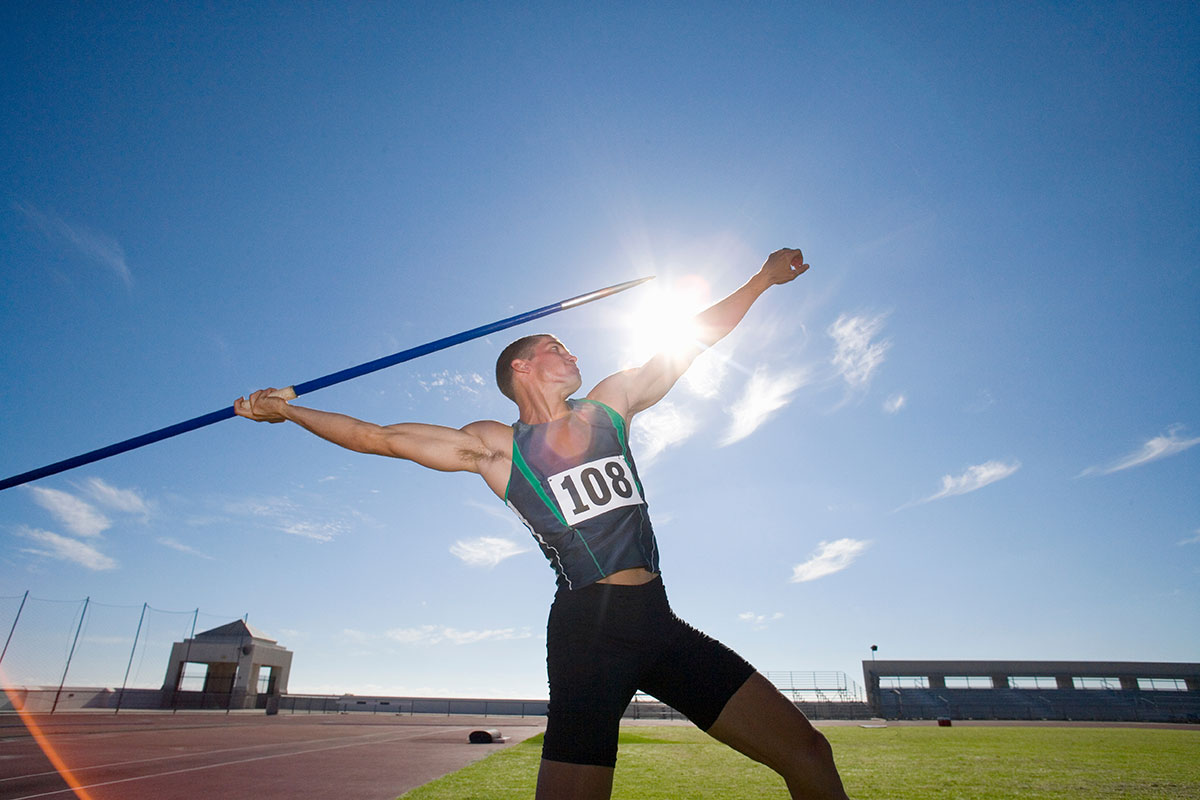World Athletics@TDK
[No.7 100-metre Dash] Who Will Break Bolt’s World Record—and When?
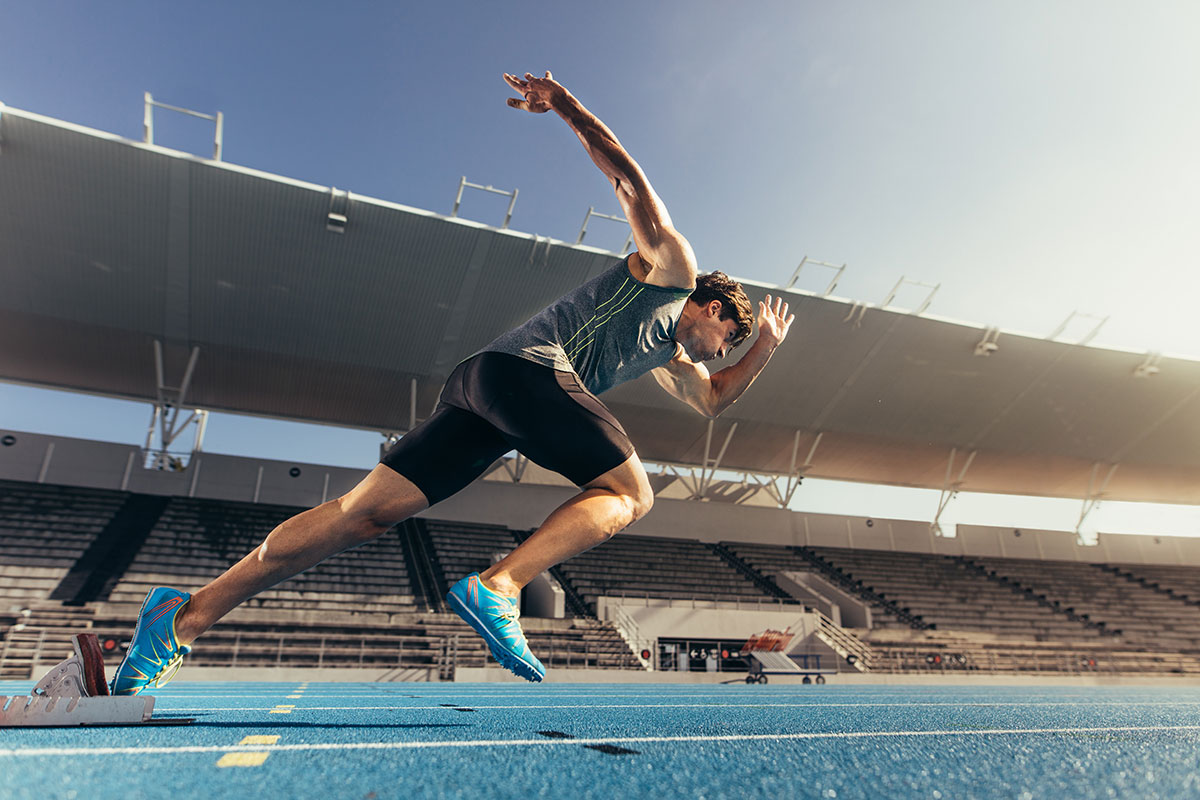
- 100 meters is a track-and-field highlight event that decides the “Fastest Human”

- The women’s 100-meter record of 10.49 seconds by Griffith-Joyner’s still stands

- Speed is the product of step rate and stride

- Maintaining maximum middle-stage speeds and reducing deceleration is the key to breaking records

- Start detection system using pressure sensors

- Barometric pressure also plays a role in short-distance records

- TDK products and technologies supporting sports science: MEMS pressure sensors

100 meters is a track-and-field highlight event that decides the “Fastest Human”
Along with the ultimate endurance-testing marathon, the 100-meter dash, or 100 meters, is considered a highlight event in track and field that determines the fastest human being.
The first official record for the men’s 100-meter dash was 10.6 seconds, recorded at the 1912 Stockholm Olympics (during the preliminary round; recorded manually with a stopwatch at the time). The 10-second barrier, which had stood for a long time, was broken by Jim Hines (USA) in 1968 (9.95A, A for high altitude), and again in 1991 by Carl Lewis (USA), who achieved the 9.8-second mark.
The winning time at the first Athens Olympics (1896) was 12.0 seconds, which means it took about a century to shorten the 100-meter world record by approximately 2 seconds. The adoption of all-weather tracks, the development of spiked shoes, and improved training methods incorporating sports science are said to have contributed significantly to record-breaking performance.
Since then, world records have been set almost every few years. In 2009, Usain Bolt (Jamaica) set a remarkable world record of 9.58 seconds at the 2009 World Athletics Championships in Berlin. The progression of world records for men’s 100-meter dash is shown below (as of March 2022). The 9.60-second barrier had not been surpassed for more than a decade, signifying how outstanding Bolt’s record of 9.58 seconds is.
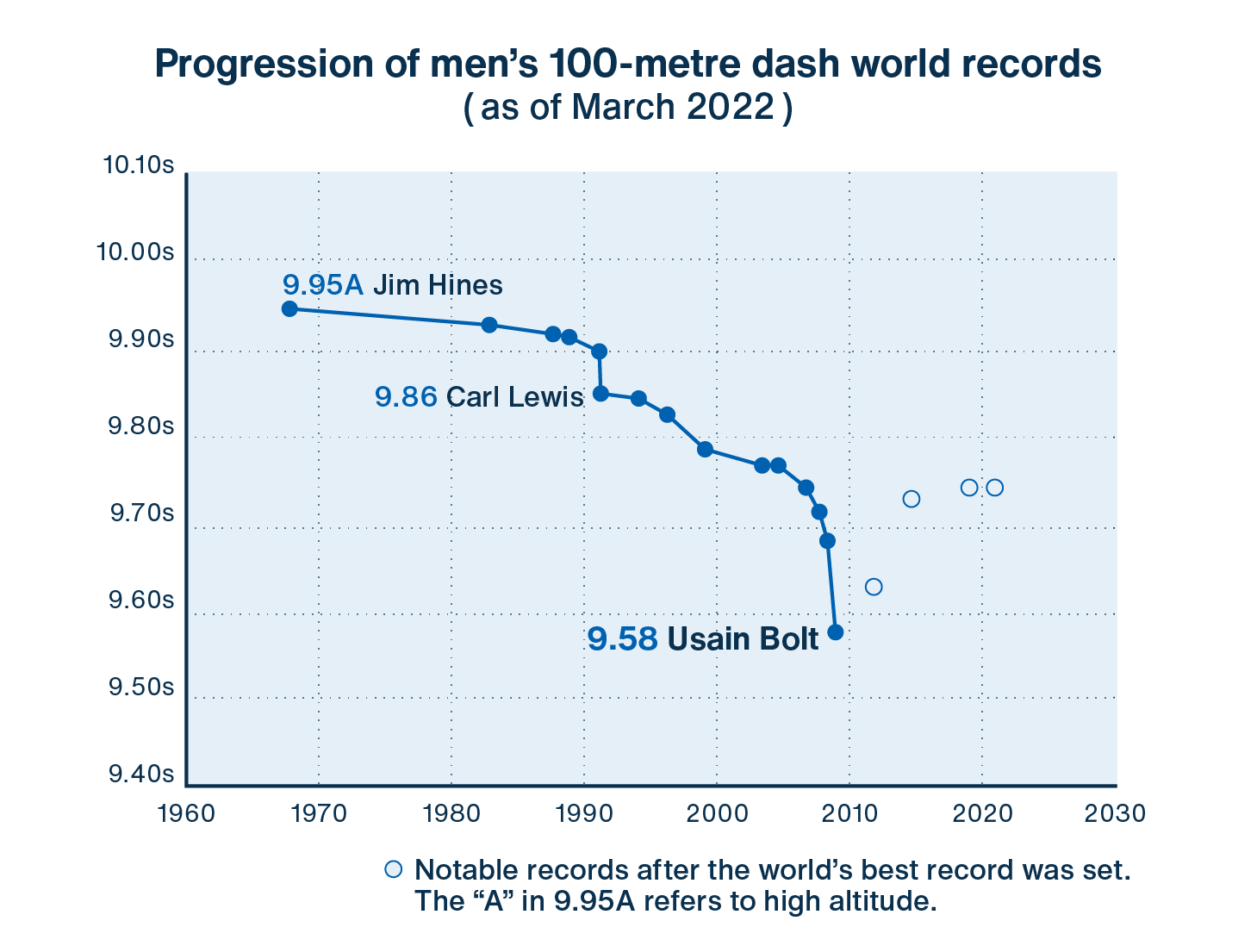
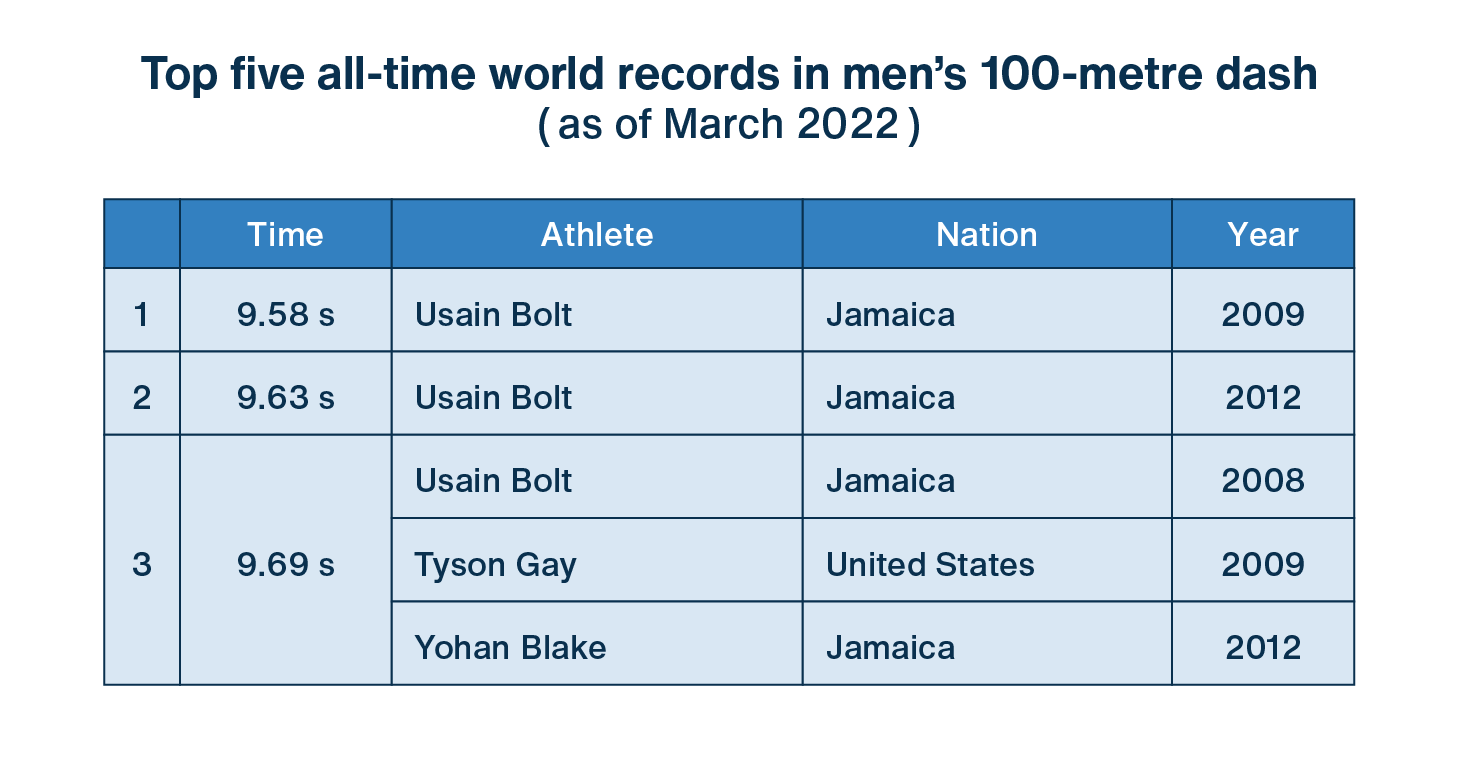
The women’s 100-meter record of 10.49 seconds by Griffith-Joyner’s still stands
The progression of world records for women’s 100-meter dash is shown below (as of March 2022). Since 1977 when Marlies Oelsner-Göhr (East Germany) first broke the 11-second barrier, Evelyn Ashford (USA) recorded 10.76 seconds in 1984, and Florence Griffith-Joyner achieved 10.49 seconds four years later in 1988. This best record has remained unbroken for over 30 years, with the world’s top athletes hovering around the 10.6-second range since. However, with Elaine Thompson-Herah (Jamaica) setting a near-world record of 10.54 seconds in 2021, hopes are high for the next record-breaker.
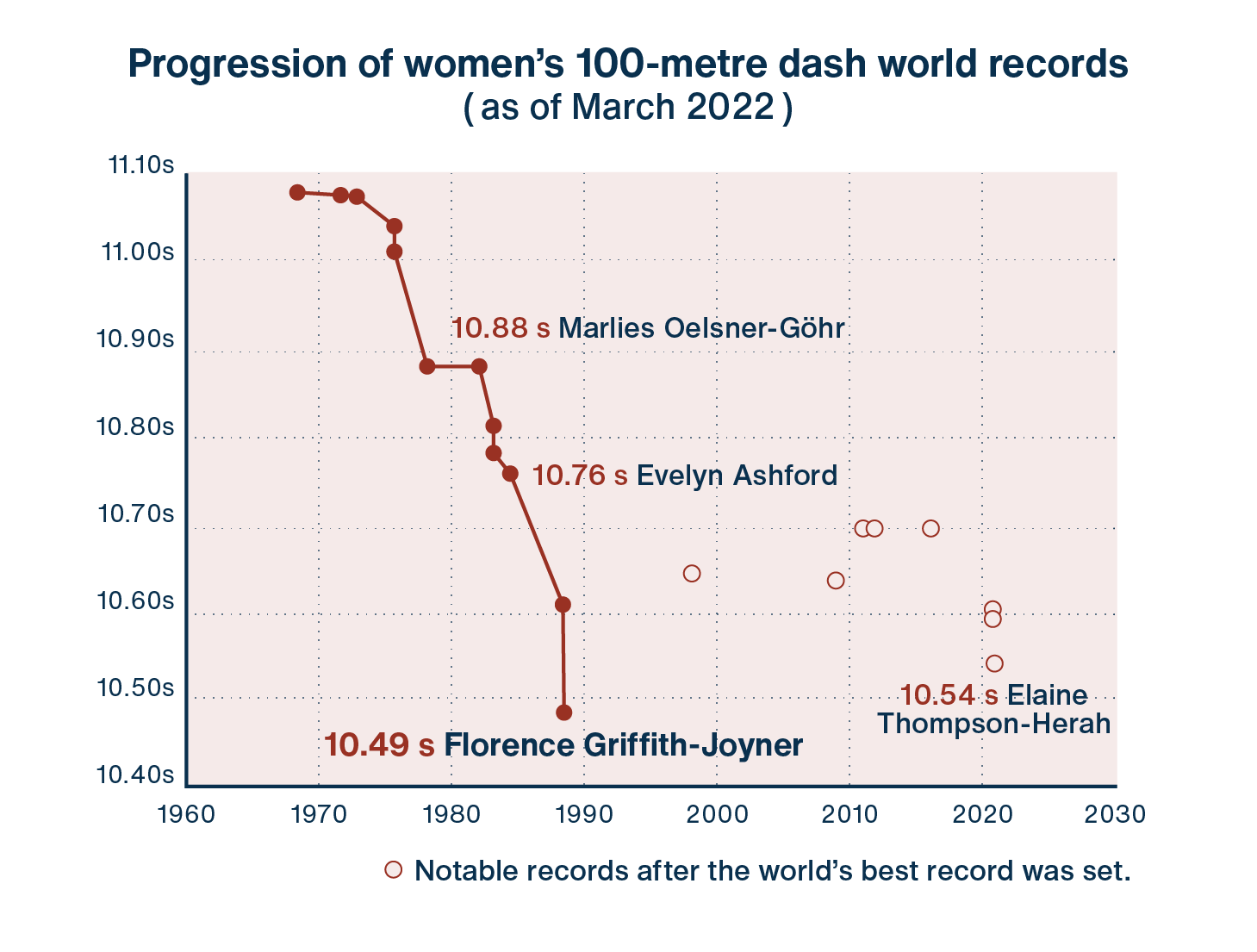
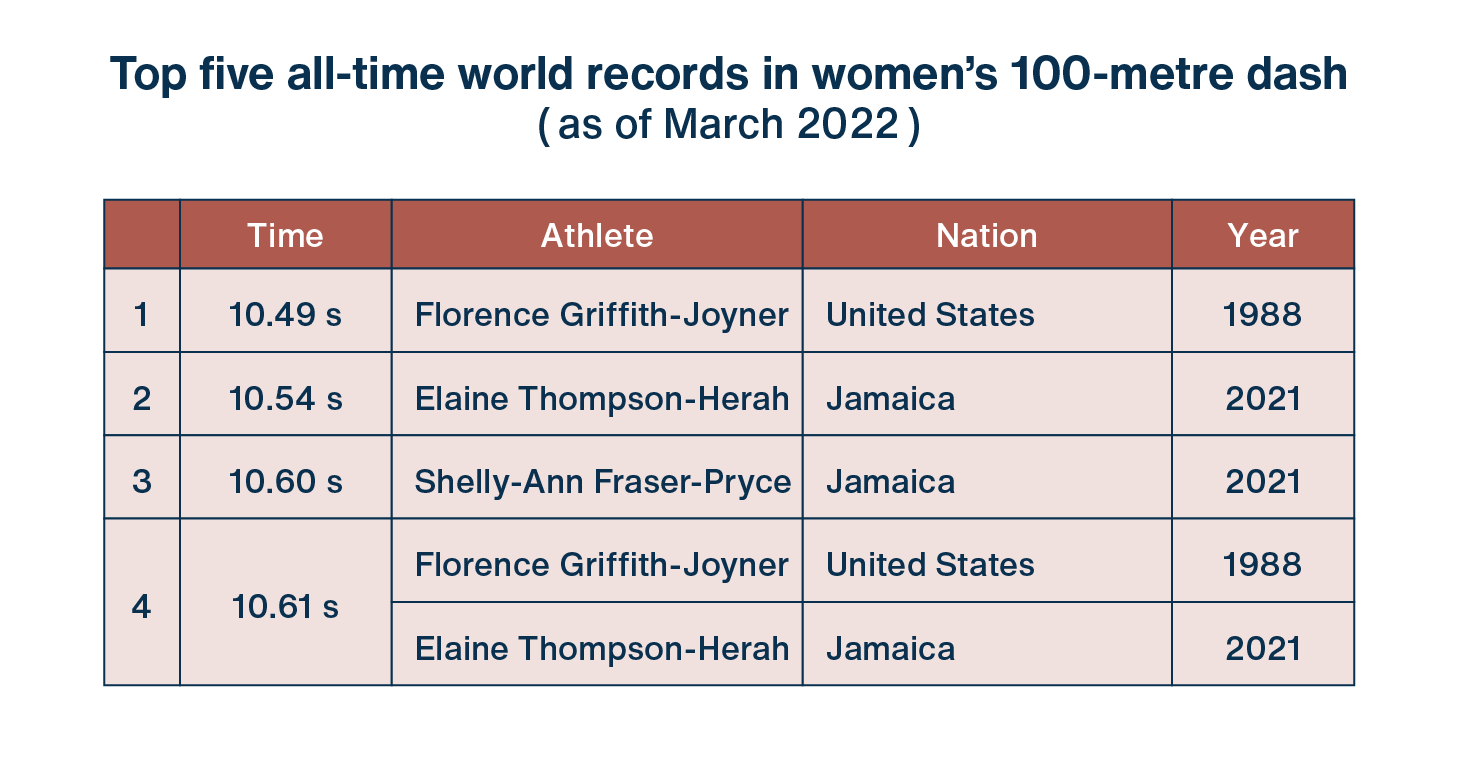
Speed is the product of step rate and stride
While the world record for the 100-meter dash is likely approaching a physical limit, the 9.4-second mark is said to be possible still. From a sports science perspective, there is yet room for improvement in step rate (number of steps per second), stride (step length), and power distribution.
The 100-meter dash is generally analyzed in the following four phases:
● Initial acceleration: the first 10 to 20 m. From a crouching stance, accelerate rapidly while gradually raising the upper body and quickly increasing the step rate.
● Secondary acceleration: 20 to 50 m section. Reach maximum sprinting speed with increasing stride.
● Maximum sprint: 50 to 80 m section. Sustain speed while maintaining stride and posture.
● Deceleration: 80 to 100 m section. Final phase of the run. Speed gradually decreases.
Speed is expressed as the product of step rate and stride. Which is more important depends on the physical abilities of the individual athlete. When Bolt achieved the world record time of 9.58 seconds, his average step rate was 4.271 steps (40.92 strides) and average stride 244.4cm.
Maintaining maximum middle-stage speeds and reducing deceleration is the key to breaking records
The following graph shows Bolt’s sectional speed for every 10 meters when he set the world record. Compared to the average sectional speeds of the world’s top athletes, Bolt’s running does not significantly differ in the initial acceleration phase. However, he is superior at maintaining maximum sprint for longer and has a better speed reduction rate during the deceleration phase compared to other top athletes. Nevertheless, there are physical limitations to how long a maximum sprint can be sustained.
The key to beating Bolt’s world record is likely to involve the distribution of stamina in the second half of the race and endurance (reduced deceleration) towards the finish. The timing of the start is also known to have a significant bearing, with a potential to reduce the total time by 0.01 seconds. However, starting hasn’t always been Bolt’s forte. He was unexpectedly disqualified for a false start at the 2011 World Athletics Championships in Daegu, despite being predicted to win again.
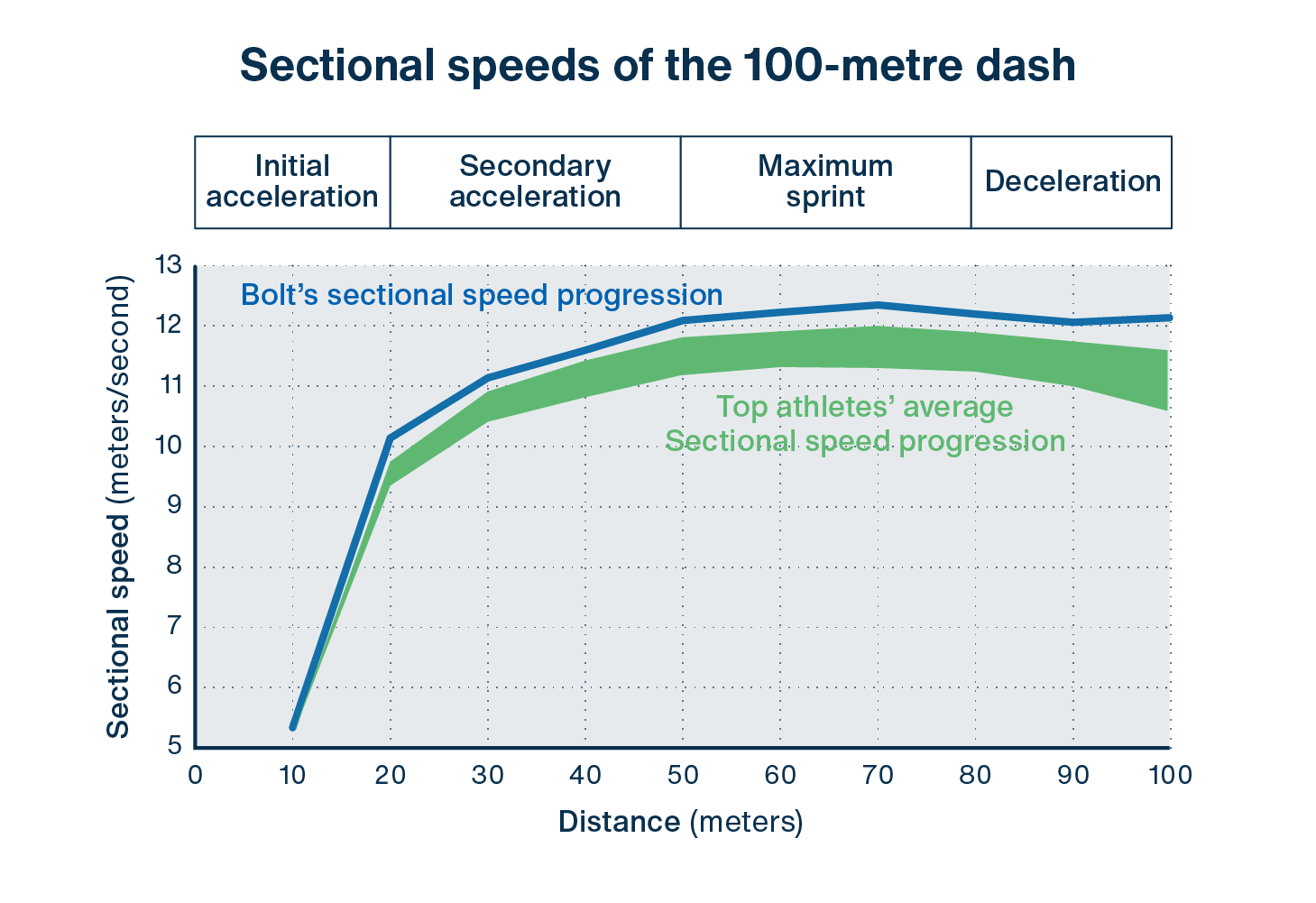
Start detection system using pressure sensors
Starting blocks equipped with pressure sensors are employed to determine the start of the 100-meter dash and other short-distance races. The starter pistol’s signal (electronic sound and flashing light) is emitted from a loudspeaker mounted on the starting block, and any start within 0.1 seconds from that point is ruled a false start. This rule is due to scientific research showing that it takes at least 0.14 seconds for a human being to react after hearing the start signal. Because the pressure sensor detects with an error of 0.001 seconds, no false starts are missed.
There are various types of pressure sensors, but the type applied in starting blocks is the strain gauge type. As metal expands and contracts under pressure, its resistance changes slightly. Strain gauge pressure sensors are designed to detect this change in resistance and computer the pressure.
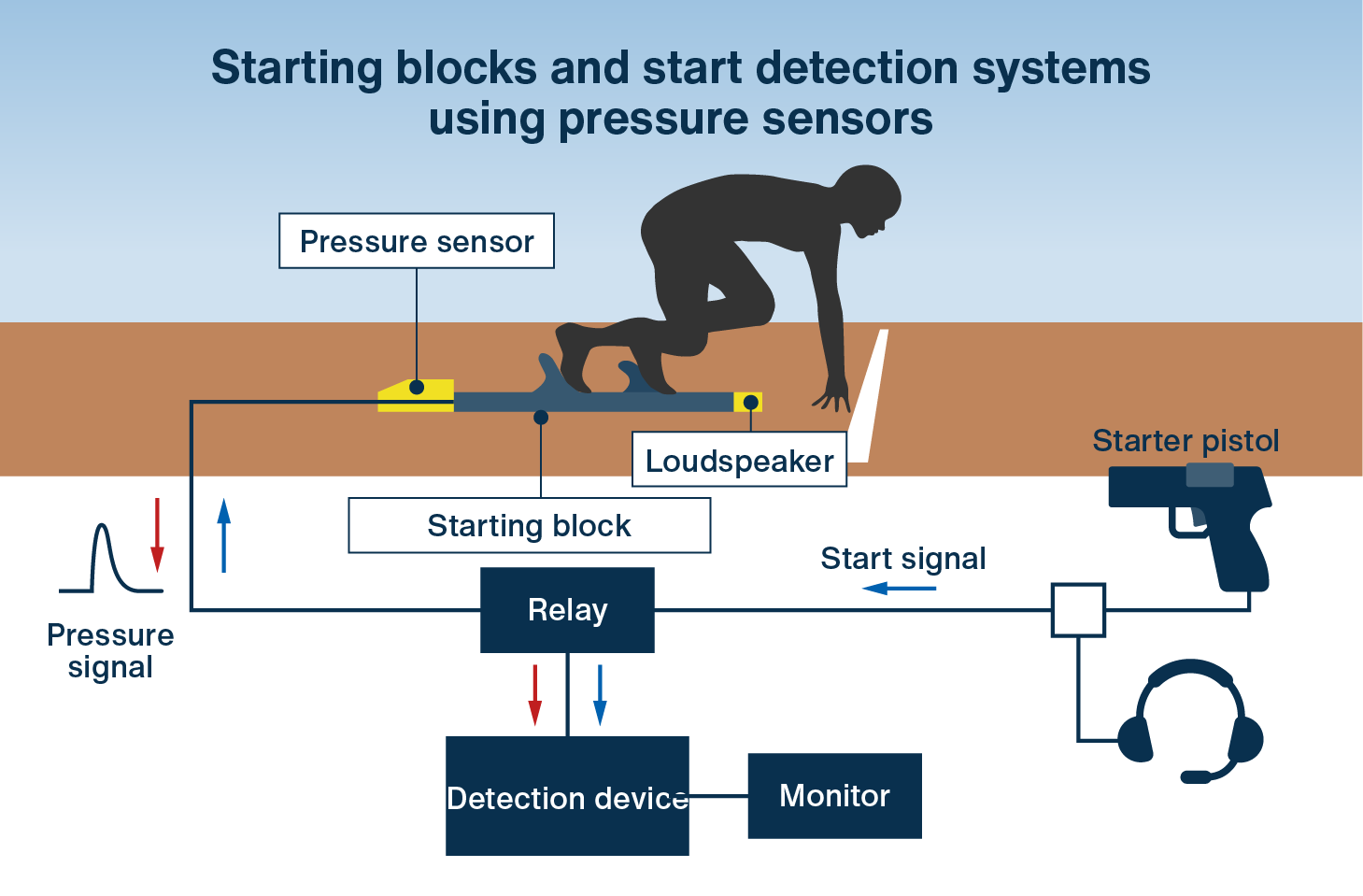
Barometric pressure also plays a role in short-distance records
Barometric pressure creates subtle effects on the 100-meter record. Jim Hines’ record, the world’s first to break the 10-second barrier (9.95A), occurred at the 1968 Olympics in Mexico. In fact, the event saw a rush of world records in short-distance running for both men and women, including the 100-meter, 200-meter, and 400-meter runs. It is believed that these results were related to the fact that Mexico City, the host city, is located at an altitude of 2,200 meters above sea level and has low air resistance due to low atmospheric pressure. The “A” in 9.95A means “altitude record” (high altitude records are also recognized as official records).
The first official use of electronic timing in the 100-meter dash, instead of manual timing with a stopwatch, was at the 1964 Tokyo Olympics. In addition to start detection systems, a range of other electronic equipment is now in use, including high-speed video cameras, anemometers, and time display panels at the finish line. Witnessing the use of such systems is another exciting part of watching track-and-field events.
TDK products and technologies supporting sports science: MEMS pressure sensors
Wristwatch-type barometers (altimeters), diver watches (underwater depth gauges), and smartwatches use small pressure sensors based on MEMS (micro-electromechanical systems) technology. MEMS is a semiconductor resistive element formed on an etched silicon diaphragm. When the diaphragm flexes under pressure, the electrical resistance of the resistive element changes, which is then detected and amplified to compute pressure. These piezoresistive gauges can be mass-produced by wafer fabrication in semiconductor manufacturing processes and are widely used in automobiles, factory automation equipment, and household appliances.
Incidentally, at the upcoming World Athletics Championships in Eugene Oregon, a mega-LED unit displaying the TDK logo will be hanging in the background of the athletes positioned at the start line of the 100-meter dash. TDK-Lambda’s AC input power supply (AC-DC converter) has been selected for use at World Athletics Championships Oregon22.
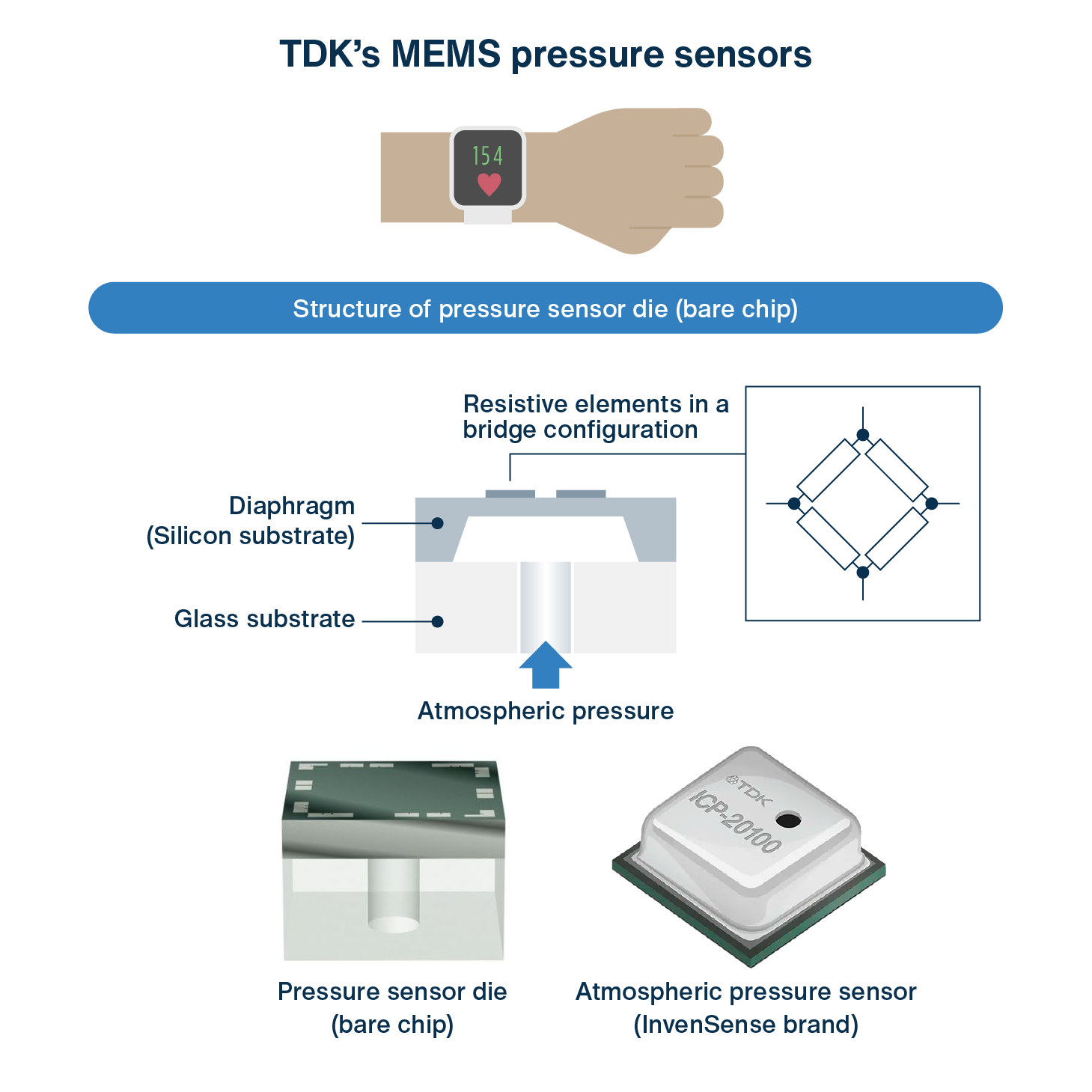
TDK is a comprehensive electronic components manufacturer leading the world in magnetic technology



